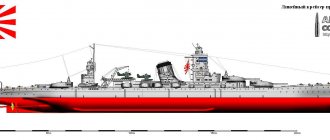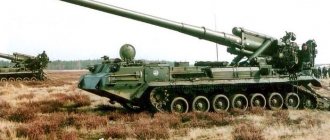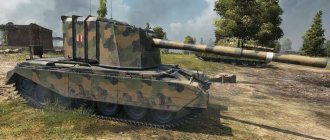| This article requires additional links for verification . |
Two people fight with sticks.
Rescue stick
stickfighting
or
stick fighting
, blunt, hand-held, usually wooden "stick" for fighting; such as a staff, cane, cane, club, etc. Some techniques can also be used with a sturdy umbrella or even a sheathed sword.
Thicker and/or heavier blunt weapons such as clubs or maces are not within the scope of "stick fighting" (as they cannot be wielded with as much precision, so it's just the force of the blow that matters), nor are more complex weapons such as taiaha
used by the Maori people of New Zealand, as well as
Macuahuitl
from the Aztec War.
While many systems are defensive fighting techniques intended for use in the event of a light weapon attack, others, such as kendo
,
arnis
and
gatka,
were developed as safe methods for teaching dangerous weapons. Whatever their history, many stick fighting techniques can be considered a sport.
In addition to systems specifically designed for stick fighting, several other disciplines include it either on their own, as in the Tamil martial art Silambam
or simply as part of a polyvalent training involving other weapons and/or bare-handed fighting, as in Kerala's
Kalaripayatta
tradition, where these wooden weapons serve as preliminary training before the practice of more dangerous metal weapons.
Styles[edit]
Painting depicting stick fighting
Stick fights between individuals or large gatherings between sub-tribes where men duel are an important part of the anthropological heritage of various cultures [ original study?
], especially tribes such as the Surma people of Ethiopia, where
Donga stick
is an important cultural practice and the best means of displaying a bride, naked or nearly so, and their more warlike neighbors, the Nyangatom people, who fight bare-chested duels, the goal which is to inflict visible stripes on the enemy’s back, using not simple staves, but sticks with a flexible, biting end.
Traditional European stick-fighting systems included a wide range of quarter-fighting techniques, which were detailed in numerous manuscripts written by masters at arms. Many of these methods have died out, but others have adapted and survived as folk sport and self-defense systems. Examples include in Portugal Jogo do Pau
, associated
Juego del Pal
from the Canary Islands, France
Canna de boi
or
la Cannu
, Poland
palcaty
and Italy
scherma di Bastone
.
Giuseppe Cerri's 1854 manual Trattato teorico e pratico della scherma di bastone was
influenced by the masters of the Italian fencing school Achille Marozzo and possibly Francesco Alfieri.
French La Cannes
still practiced as a competitive sport.
The self-defense adaptation la canne,
developed by Swiss gunsmith Pierre Vigny in the early 1900s, has been revived as part of the Bartitsu curriculum. [1]
In the United States in the early 1900s, fencer and self-defense specialist A.S. Cunningham developed a unique system of stick fighting using a cane or umbrella, which he recorded in his book The Cane as a Weapon.
.
The single stick was developed as a method of teaching the use of pressure swords such as the cavalry saber and naval sabre. It was a popular pastime in Britain from the 18th to the early 20th century, and featured fencing at the 1904 Summer Olympics. Although interest in the art waned, a few fencing coaches continued to train with stick, and competition in this style of stick fighting was reintroduced into the Royal Navy in the 1980s by Commander Locker Madden. The art continues to gain momentum in the martial arts community in the UK, Australia, Canada and the USA.
Latin America also has its share of martial arts dedicated to stick fighting, including Venezuela's Juego del garrote
, Brazil's
Palo do Brasil
and
Maculel
, Trinidad's
Calinda
and the South Americans'
Eskrima Kombat
. [2]
Sticks and staves of various sizes are common weapons in Asian martial arts, in which they vary in design, size, weight, materials and technique, and are often used both interchangeably and in conjunction with open hand techniques. For example, Filipino escrima
or arnis use sticks traditionally made from rattan or fruitwood and can be used individually or in pairs.
Stick for urban self-defense
The stick, along with the stone, is one of the first human tools. A stick can be found on almost any street (pipe, thick branch, board, etc.). But, despite the naturalness and simplicity of this weapon and its use, it is still possible to give a number of recommendations for using a stick in a street fight - both in the case of defense with a stick and for defense against it. 1. The striking part of the stick is its last third. If the blow falls on the middle of the stick, or even on the side closest to the blower, it will be much weaker. At the end of the stick is all the impact force, all the swing. Therefore: - if you have a stick, hit with the end, without letting the enemy get closer. Keep your distance. - if the enemy has the stick, try to close the distance to get closer to him.
On the street, the opponent will most likely swing the stick randomly, with a lot of swing and momentum. You're unlikely to find an experienced swordsman or re-enactor who likes to swing a sword on the weekends in the park. Therefore, after waiting for him to deliver another sweeping blow (naturally, moving away from him to the side or back), rush at the enemy, blocking his hand with the weapon with one hand, and striking/grabbing with the other. How to do this - see below.
2. At the same time, the stick may not work well in a confined space - it needs a swing. And at close range it is already of little use, unless the fighter has the skills to work with the other end of the stick - from the little finger.
3. In an extreme situation, as a rule, fine motor skills fail almost completely. Therefore, simpler, “rougher” techniques are applicable on the street, and graceful, elaborate movements are of little use. In other words, it is better to go to historical fencing or to a re-enactors club (especially where applied work with a stick for self-defense is also studied) than to some fashionable section of some south-eastern direction, where there are a lot of complex, beautiful-looking movements.
But here the question is for whom what is more important - efficiency or effectiveness. For modern people, the second is often more important.
4. A stick works well against a knife, as it can be wielded at a longer distance. You need to hit the hand holding a knife or other weapon (the hand, metacarpal bones, fingers, joints), and with the next blow, neutralize the aggressor.
5. You need to understand that an ordinary stick (not a crowbar, not a rod of reinforcement, not a bat) will not necessarily help to “knock out” the aggressor. You can break a stick on a person's head, but he will continue to come at you. However, if you have the opportunity to use a stick, you cannot refuse it. In the end, man became the king of nature thanks to primitive tools and tools - sticks and stones.
6. It is best to hit the limbs - with a broken (or broken) hand, the aggressor will not be able to hold a weapon or strike, and with a bruised leg, he will not be able to run after you.
7. In general, blows with a stick are identical to blows with a knife or hand. Usually they hit you with a stick from top to bottom - on the head, on the bridge of the nose. Diagonally - along the collarbones. Backhand - on the head (wherever you hit, everywhere is “good”). Side impact - right there. Poke strikes with a stick are very rare, although, of course, you can learn them. They can be applied to the face, Adam's apple, solar plexus, but you need to train your accuracy. For example, hang a coin on a rope and poke it. You can use a stick like a bayonet, delivering pokes and blows to the face. It is good to use a stick, holding it with both hands - you can hit with the middle, you can poke with both ends. Bottom-up blows (to the knee, to the groin) with a stick are practically not used, although they are also possible.
Working with a stick depends on its length. Usually there are 4 conventional types: - staff (to the middle of the chest) - cane (to the waist) - club (elbow-length) - wand (palm)
Exercises for hitting with a stick: 1. From hitting with a stick from above 2. From hitting with a backhand with a stick
1. The first one stands with a stick at the ready. Can strike only in a vertical projection (from top to bottom). You must hit with full force and at full speed, but the training “stick” is made of soft materials (for example, a polypropylene pipe wrapped in isolon). She cannot injure, but her blows are unpleasant enough that the fighter tries to avoid them - and thereby perform the task correctly. (Note - at first the first one hits slowly, gradually increasing the speed training by training.) The second one runs up to him within striking distance, and then the first one strikes. The second, with or without the help of a feint, removes the stick by moving his forearm with a twist (Fig. 222).
After completing the removal, he can strike with a “fork” to the Adam’s apple with a throat grab and a subsequent back trip. Or other options - for example, with a strike with the heel of the palm. The same movement can be performed on the inside, but it is better to always approach the enemy from the outside, from the side, since if we go inside, he can meet us with blows from the other hand.
Naturally, it is necessary to learn the movement by breaking it into 3 phases. First, I’ll simply remove the hand with the weapon, and only then, after practicing the reflex removal, we move on to further actions (grab the throat, strike with the palm). The third phase is the execution of the rear step followed by finishing.
2. The first one stands with a stick at the ready. Can strike only in a horizontal projection (from oneself and towards oneself). He must also hit with full force and at full speed. The second one stands, leaning forward a little, as if luring the blow towards himself. At the signal, the first strikes, the second must swing back and, catching the moment when the stick flashes past, jump sharply forward, fixing the hand with the weapon and striking - a “fork” strike and a throat grab, for example. This can also include a knee strike to the groin. Or carry out a rear step after grabbing the throat. The movement is also performed in both directions. An important point is that you need to first calculate the distance so that when the second one is in the extreme position (stepping back), the stick whistles literally a centimeter from his face - the blows must be delivered below eye level. So that there is a feeling of danger and a sense of the boundary between a safe distance and a dangerous one is developed.
Interesting Facts:
— In the old days in Russia, in addition to wall-to-wall fighting, there was also stick fighting - when two groups of opponents met, holding sticks in their hands. This species was later banned due to its particularly high morbidity. Similar historical types of mass fights with wooden sabers (and fatal results) are known among the Bulgarians.
“Such fights were the best preparation for hand-to-hand combat in its true sense - a fight between two groups of armed people, with a 100% fatal outcome for many participants.
— It is believed that Russian “collar” wrestling, where wrestlers make a preliminary grab for clothing in the neck area, and cannot act with the second hand (in some variants only at the moment of throwing), and throws are carried out with their feet, was one of the options for preparing for stick (hand-to-hand) combat. The unused hand had to have a weapon, so you had to learn to do without it. In a close fight, close to each other, when it was impossible to swing an ax or sword (stick), sometimes only wrestling could help knock the enemy to the ground.
- In the 16th-17th centuries. in Holland, using a cane rather than a knife to resolve conflicts became the hallmark of a good citizen. Using a knife in a fight guaranteed at least severe wounds and criminal punishment, while a cane could simply knock the knife out of the hands of the “outcast.”
See also[edit]
- Martial arts portal
- Angampora
- Arnis
- Banshai
- Bataireacht
- Bojutsu
- Canne de combat
- Gatka
- Zukendo
- Jodo
- Kalaripayattu
- Kendo
- Kenjutsu
- Krabi – krabong
- Kuttu Warisai
- Mardani Khel
- Quarterstaff
- Silambam
- Silambam Asia
- Takhtib
- Thang-ta
- Varma kalai
- World Silambam Association
- Matrague (Algeria)
Steel arms. Battle pole
Labor made a man out of a monkey. As you know, one of the first tools with which this transformation took place was a stick. It was also used for gathering, digging (the famous digging stick), and, of course, for self-defense. Over the years, even such a seemingly simple weapon has undergone a number of changes. Thus, in the East, first in China and then in Japan, a fighting pole appeared, which is still one of the most common types of edged weapons. Possession of a pole is included in the complex of studying martial arts of different schools and directions as one of the main and first skills on the path to becoming a warrior and even a monk. Yuri Kukin tried to understand the features of both the weapon itself and its history in the material diletant.media.
The origin of the pole is indeed ambiguous. Many martial arts researchers believe that the predecessor of the fighting staff could have been the so-called yoke. Remember Soviet cartoons or films: a woman puts a curved and bulky rocker on her shoulders and goes to fetch water. It doesn't really look like a weapon. However, unlike the “Russian” one we are used to, the eastern rocker is an almost even straight pole (although notches were also made at its ends for greater convenience), on which two vessels with water or other objects that needed to be moved are hung. In Okinawa, the birthplace of modern Japanese martial arts, such an instrument was called “tenbin”, but the weapon was called “bo”. "Bo" means "long wooden stick" in Japanese.
Tenbin - in Japan, a stick for carrying water (like a rocker)
The first mention in written sources of the use of this item as a weapon (specifically in Okinawa) dates back to the 14th century. However, the birthplace of the fighting staff was most likely China, with which the Japanese had established trade at that time. And despite the fact that the origin of the word “bo” is Japanese, there is an older name for this weapon - “kon” (or kun), the roots of which, in turn, lie in one of the Chinese dialects.
According to Fumio Demura’s version, which is reflected in his book on “bo,” the art of owning “kon” appears in China as early as the 6th century. At that time, according to him, the power of the law was reduced to a minimum, and the rule of the strong prevailed. In order to somehow defend themselves, the monks of the Shorin-ji temple began to use improvised means, many of which later became part of Okinawan kobudo (which appeared due to similar conditions three centuries later), as weapons.
The Okinawan fighting pole-bo was first mentioned in 14th-century sources.
By the way, on one of the steles of the famous Shaolin Monastery there is even a legend about thirteen monks who “armed with staves, saved Emperor Li Shimin from the attack of the usurper and returned his throne.” They say that this is nothing more than a legend, although it was from the 7th century that Shaolin raised martial monks and was considered the center of martial arts. All this speaks of a certain tradition of the use of a pole by monks as one of the ancient and basic types of weapons. Indeed, now the use of a fighting pole is studied both in Chinese Wushu and in Japanese karate.
The technique of wielding a staff in both martial arts is also similar: for example, a blow with a stick is not struck directly at the enemy, but rather is carried out in an arc. To do this, the pole must be twisted with the hand, which is something that special emphasis is placed on in the study of this weapon. However, there are also differences. Thus, in Okinawan kobudo, one of the main grips is “bo” - with both hands, retreating a third from both ends (kontei) of the staff, respectively.
Gun is the name of the Chinese fighting pole, equal to the height of a person.
In wushu, the pole is traditionally held almost like a shovel: one hand rests on the end of the staff to guide and create emphasis, while the other is closer to the middle to enhance the blow. Since the Chinese pole is more flexible, unlike the Japanese one, and was often made of bamboo, blows to wushu with it are sharper and smoother, in contrast to sharp and hard blows in karate. This may be due to the fact that the Japanese bo had to withstand an attack from an opponent with a sword or any other bladed weapon.
At the same time, in both wushu and karate, weapons are usually made for a specific person for greater convenience and efficiency. However, it is generally accepted that the standard Okinawan “bo” should be 182 cm in length and approximately 2.5 cm in diameter. At the same time, the shape of the stick can be completely different: rectangular, octagonal, and round. Shaolin monks have several types of poles, which vary depending on the length. Gun is the general name for a stick that is the length of a person’s height; Changgun is a pole whose length can be significantly longer than human height, and Gunban, on the contrary, is a short pole up to shoulder level. With the help of such a fighting staff, it was possible to protect oneself even from opponents who were superior in number, simply not to let them approach oneself, and, without killing them, to carefully incapacitate them. Well, isn't it the perfect weapon for a monk?
Karate-do
Karatedo means “Way of the Empty Hand”. It originated in Okinawa when the kingdom was a state. Karate is based on several types of Chinese martial arts. Karate is a form of self-defense without weapons, which uses mainly striking techniques with legs and arms.
Funakoshi Gichin is considered the first master to introduce karate to Japan. In 1920, he conducted an entire advertising campaign demonstrating karate techniques. Since then, karate has become one of the types of Japanese martial arts. Karate is very popular in the world, as it has a lot of showiness and entertainment.
Karate training
Aikido
Aikido means "the path to harmony of spirit." This type of martial arts was founded by master Morihei Ueshiba in the 20s of the last century. It is fundamentally different from other types of martial arts in that its main principle is to use the strength and energy of the enemy against him.
Aikido techniques are dominated by escapes, movements and so-called “controls”, which allow you to defeat your opponent by dodging his weapon, such as a sword, arm or leg, and then neutralizing him. Since aikido does not require a lot of physical strength, this type of martial arts is popular among women.
Aikido technique demonstration
Sticks
This style does not use standard length sticks. They are cut in proportion to weight and length. Increasing length may be sacrificed for better speed and power. The stick can be anywhere from 31 to 26 inches long. To deliver a powerful blow, sticks made of durable baja or kamagong wood are used, which have an advantage over light rattan sticks. Most stick strikes are made with a wrist motion. De Campo also uses unvarnished sticks, without firing or varnishing, with bark. They are thicker and heavier than regular ones.
Style technique
The main features of the De Campo technique are:
- lack of feints,
- the initial blow is always delivered with the greatest force,
- any part of the opponent's body that is in the area of possible damage must be the initial target,
- most often the hand with the weapon is struck first; if the hand with the weapon is behind, the blows are applied to the rest of the body,
- no blocks stick to stick,
- there are no active actions with the hand without a weapon,
- all disarmament of the enemy is carried out by simple precise blows to the hand with the weapon,
- all combinations of strikes are trained in a student-instructor pair.
Juttejutsu
Another type of Japanese martial arts dedicated to a specific weapon is jutte. This metal club, shaped like the legendary sai dagger, is the main means of striking the enemy.
Unlike the famous dagger version, the jutte club is intended primarily for defense and not for attack, although modern versions of the weapon include side blades. The signature technique of juttejutsu is blocking the blow of an attacker with a weapon.
Jujutsu
Considered the progenitor of Aikido, the art of jiu-jitsu was founded back in the 16th century by master Hisamori Takenouchi. It was he who was the first in Japan to develop a technique for maximally saving a fighter’s strength and abandoning striking techniques. He placed grabs, throws, and the use of the enemy’s energy to disarm him at the center of battle tactics.
Particular importance in jiu-jitsu is given to breathing, stances and the ability to move in front of the opponent. Evasion is one of the main techniques, while grappling is the key goal. If the goal was to neutralize the enemy, then the students practiced precision strikes on painful points of the upper half of the body.
Differences between clubs and maces
Typical clubs were short-shafted weapons. When ignorant people see clubs for the first time, they often confuse them with maces. Indeed, these different types of weapons are extremely similar to one another. Their main difference is that maces are combined weapons. Because they consist of handles to which impact elements are attached. Whereas clubs are always made from solid pieces of wood.
Often the clubs were wrapped in leather, and spikes were installed on the tops. Usually thick nails acted as spikes. For this purpose, holes were drilled at the top so that the nails could split the clubs. But the nails themselves were not driven in completely; their heads were then chopped off or ground off.
Bojutsu
Considered an element of a number of martial arts, bojutsu combat is much older than karate or judo. The bo in the name of the martial arts is a staff, which, according to the philosophy of art, is an extension of the fighter’s limb and is not considered a weapon.
Many schools in Japan and around the world teach fighting using bojutsu techniques. In Okinawa, the art is included in the compulsory training of Japanese army soldiers, and a huge number of hours are still devoted to fighting with a staff. Among other things, bojutsu is part of the demonstration performances of many masters.
Judo
Judo is translated from Japanese as “the gentle way.” It was founded in the 80s of the 19th century by master Kano Jigoro. He borrowed from jujutsu (jiu-jitsu) techniques that were most suitable for sports competitions, but were the least traumatic.
He complemented the struggle with spiritual and personal improvement. The purpose of judo is self-defense without weapons through throws, painful holds, holds and chokes.
There is almost no striking technique in judo, especially in sports judo, unlike karate. Due to the technical techniques in judo, great physical strength is not required, so it is accessible to most comers. It has been included in Olympic sports since 1964.
Judo competition
Naginatajutsu
Named after a special type of samurai weapon, the type of martial art naginatajutsu is currently experiencing a rebirth. Polearms with a blade at the end were known back in the Middle Ages, but by the 20th century they were practically forgotten, although in the heyday of the samurai even women mastered the fighting technique.
Naginata training is now carried out in all prefectures of Japan; this type of fighting has gained particular popularity among students due to its entertainment. Now elements of this martial art can be seen in kendo and a number of other martial arts.
Kyudo
The fate of kyudo - the art of archery - is in many ways reminiscent of the fate of kendo. Like kendo, it was used to train Japanese warriors. Then, just like kendo, it was forgotten after the Meiji Restoration. In 1949, after the creation of the All Japan Kyudo Federation, it began to be revived as a popular sport.
Currently, sports kyudo uses a standard Japanese composite bow made of bamboo or wood. The length of the bow is 2.21 m. Targets are placed at a distance of 60 and 22 m. When shooting, not only accuracy, but also the gracefulness of the archer’s movements is assessed.










